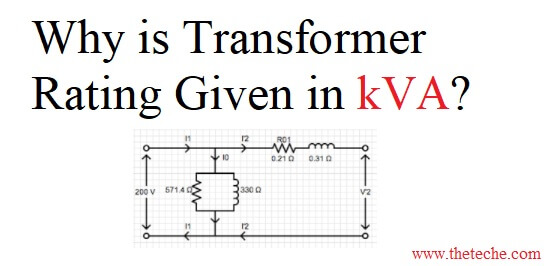Rating of a Transformer
The name plate of a transformer specifies the rated voltages of primary and secondary windings, the rated currents of primary and secondary windings and the rated volt-amp. Meanings of these specifications are as under:
- While manufacturing a transformer, insulations are provided to primary and secondary windings. These insulations are such that these windings safely withstand certain voltages, say V1 and V2 If voltages across these windings are more than V1 and V2, there may be a chance of damage. Thus V1 and V2 are the maximum safe voltages. These are the rated voltages of the transformers.
- Conductors used to manufacture primary and secondary windings have certain cross-sectional areas. These areas usually decide their current carrying capacities. Let these currents be I1 and I2. If currents in the winding are more than I1 and I2, temperature of the windings is more than the safe temperature and there may be a chance for damage. The maximum safe current the windings can carry is the rated current. Strictly speaking these currents are restricted by the resistivity of conductor material and cooling arrangement in the transformer.
- Power supplied by the transformer to the load is V2 I2 cosΦ, where cosΦ is the load p.f. The load p.f depends upon R,L,C values of load. In other words, the p.f. is totally decided by the consumer who connects the equipment. As power handled by the transformer depends on load p.f., rated power of the transformers can not be satisfied. As out of V2 ,I2 and cosΦ, only rated values of V2 and I2 can be specified, power handling capacity of a transformer is expressed as volt-amp (VA or kVA or MVA) and not as W or kW or MW. The product of rated voltage and rated current is the rated capacity, also called full load capacity’ of the transformer.
[sc_fs_faq html=”true” headline=”h2″ img=”” question=”Why is transformer rating given in kVA?” img_alt=”” css_class=””] We have seen that copper loss depends on current and iron loss depends upon voltage. Hence the total loss in a transformer depends upon volt-ampere (VA) only and not on the phase angle between voltage and current i.e. it is independent of load power factor. That is why the rating of a transformer is given in kVA and not in kW. [/sc_fs_faq]
Application of Transformers
Transformers are used in
- Electrical power engineering for transmission and distribution.
- As an instrument transformer for measuring current (C.T) and measuring voltage (P.T).
- As a step down and step up transformer to get reduced or increased output voltage.
- Radio and TV circuits, telephone circuits, control and instrumentation circuits.
- Furnaces and welding transformers.
- See More : EMF Equation
- See More : Transformers construction and working
- See More : Design of transformers






